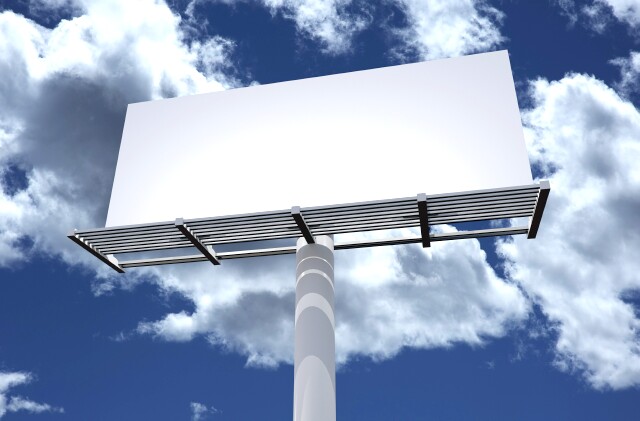Maximizing the Impact of Out-of-Home Measurement

Where is out-of-home (OOH) headed in a world of media fragmentation and greater competition for consumer attention? The ARF helped to answer these questions this week at their Maximizing OOH Impact event with an impressive roster of participants from Clear Channel Outdoor, ESPN, National Geographic Society and the DPAA. The panelists weighed in on how data, technology and creative can all be leveraged to raise awareness, improve branding and efficiently capture the consumer journey.
OOH at a Measurement Inflection Point
According to Barry Frey, Chief Executive Officer, DPAA, "OOH is one of the hottest media today." He cited three pivotal societal and technological changes that have been a boon for the medium. First, people are spending more and more time out of the home. "We are increasingly an active mobile society," he asserted, "and we are becoming a more urban society." As mobile phones become ubiquitous, they fuel the ability to track people wherever they go. Second, Frey sees advertising inside the home as "fragmenting at best and declining at worst." Third, with the addition of digital data capabilities, OOH is now able to count, measure the impact and attribute usage just like the rest of the media industry. This improvement in measurement coupled with a safe, viewable, closed system that has no ad blocking places OOH on equal footing with other established media options.
Data and Technology
The advent of improved technology that results in more valuable data is pivotal to the growth of OOH. The ability of marketers to track the consumer journey with mobile geo location data, for example, has created opportunities and greater confidence in it. Nielsen has been very active in expanding its OOH measurement offerings as are companies such as iQ Media which offers visual detection data that includes mood and engagement metrics.
"There are three reasons why mobile is so important," noted Andy Stevens, Clear Channel Outdoor Senior Vice President, Research and Insights. "Everyone has a phone and [carries] it all the time. In fact, 85% of adults always have their phone within arm's reach." The full consumer journey becomes evident because the data tells us where people are, their routes throughout the day and their possible exposures to billboards. The methodological road has been a long one, but now refinements in the methodology, such as radius assessments and direction of travel, give the advertiser greater confidence that their ads have actually been viewed.
Clear Channel's case study "not only used mobile data in the planning and measurement of OOH, [but] also used it to amplify the impact of OOH by retargeting people who have seen OOH ads with mobile ads," Stevens explained. This has a priming effect where the lift in store visits with and without the additional mobile ads could be compared. "There is a higher lift from people who have seen both the OOH ad and the mobile ad," he continued. "It is a one plus one equals three effect going on. There is a natural synergy between mobile and OOH." Stevens is finding that these results are valuable sales tools for advertisers who may be using mobile but currently do not have an OOH strategy. "An integrated media strategy can yield better results overall," he concluded.
Powerful Creative Is a Must-Have
Powerful creative also plays an important role in OOH effectiveness. Emma Carrasco, Chief Marketing and Communications Officer/Senior Vice President of Global Strategy for National Geographic Society has developed a Photo Ark Campaign to help raise awareness of the last 12,000 species in captivity before they disappear. "Our partnership with the Outdoor Advertising Association of America enabled us to take this campaign to a whole new level," Carrasco explained, where association members can get more involved in spreading the message. She shared that the feedback has "been tremendous." Social engagement and its resulting data has offered a huge, measureable boost in awareness.
Carrasco sees a continuation during the next five years of National Geographic Society's efforts to build a complete documentation of all of the species in captivity. Currently 7,000 animals have been photographed, but there are still 5,000 left to do. "We want to bring awareness to what happens to society when these species disappear," she said. "We might actually have a chance to save some of them." Strong creative in conjunction with OOH ad placement and measurement will help propel this worthy cause.
Data Debunks OOH Myths
OOH exposures are surprisingly pervasive. Christian DeBonville, Director Advertising and Marketing, ESPN, found that "the OOH audience is seen throughout the year, throughout the day and not just at the biggest events in bar locations. It is programming that is on in the morning, during mid-day when we presume people are at work, at the gym or other out-of-home locations where we are seeing significant lifts."
He noted that agencies and clients are more receptive to giving credit for audiences that are viewing programming and ads outside of their primary residences. The ability to credit the full consumer journey is great news for both advertisers and content creators.
Click the social buttons above or below to share this story with your friends and colleagues.
The opinions and points of view expressed in this content are exclusively the views of the author and/or subject(s) and do not necessarily represent the views of MediaVillage.com/MyersBizNet, Inc. management or associated writers.


